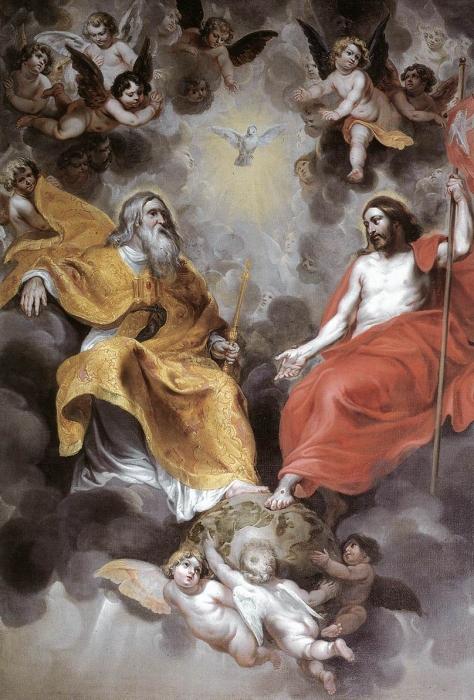Christianity is the most widespread and at the same time the most mysterious religion. In many other theological systems, everything is clear, everything is explainable, and in Orthodoxy the central teaching of the Church about the Trinity is completely incomprehensible. What is the Holy Trinity? And how to understand that all three faces of the Divine are one, but do not merge into one person.
If you ask any Orthodox about this, he will shrug: I don’t know. And this ignorance is not shameful. A person cannot know and understand the mystery of the Trinity, it is not accessible to the human mind. The Holy Trinity is described in theological literature in a few words with a “not” particle at the beginning. So, the Trinity is “not merged”, but also “inseparable”. She is not one Being, but not three separate Beings, not three gods. Such a combination does not lend itself to logical explanation; therefore, when speaking about the Trinity, analogies are often used. For example, the Trinity is often compared to the sun. The sun is light, heat and the sun itself. These concepts, substances are different, everyone can feel the heat, but not see the light, see the light, but not feel the heat (in winter), but still they are all inseparable. To understand what the Holy Trinity is, for example, of course, is impossible, but it gives some vague idea of this mystery.

Is it strange that millions of believers around the world are actively using a concept completely inaccessible to the mind? Prayer of the Trinity is included in the daily rule, the Church of the Holy Trinity - a traditional decoration of villages and cities, on the analogue lies the icon of the Holy Trinity. It seems that one must not respect oneself in order to talk about what one does not understand. In fact, believers take this a little differently. The mystery of the doctrine of the Trinity and some other dogmatic points only indicates that the Christian faith was not invented by people, it is beyond human understanding, and therefore of divine origin. Only something understandable and accessible can be invented and invented, and not vice versa. Therefore, the mystery of the doctrine of God proves the origin of the Christian faith from above.
All shrines in Christianity can be depicted. If Christ was born and walked the earth, then it can be drawn. Angels were the Virgin and the Holy, which means they are also available to the image. All saints, angels, and even the Lord Himself are depicted on icons. There is only one exception: the Holy Trinity. Indeed, after all, no one has ever seen the Trinity, so it is impossible to depict. Moreover, if the third Person of the Trinity - the Holy Spirit - can still be represented as a dove, then no one has ever seen God the Father. True, they still draw it in the form of an old man next to a young son, but such an image is completely non-canonical, that is, it is not recognized as correct.
There is, however, one canonical image of the Trinity. This is the Holy Trinity - an icon of Andrei Rublev. Monk Andrei depicted three angels who came to Moses. It is believed that it was God who came in the form of these angels. But what is so ingenious in his icon?
It is drawn, of course, beautifully, but there are more impressive icons, and this one is known. The point here is not at all the art of oil painting. The Trinity icon is famous for its content. Before the prayer, divine advice in the bowels of the Holy Trinity even before the incarnation of Christ. God the Father looks at the Son, and the Son looks at a small bowl on the table. This is a conversation about the atonement of man, about future suffering, about communion. It is precisely with this semantic fullness that the icon of the Trinity is known.